When China launches normal missiles, even in the South China Sea without destroying any enemy ships, it is bad news. But when the Chinese launch ballistic missiles, especially one that can carry conventional or nuclear warheads, it is very bad news. And Beijing had just fired two such missiles. Bloomberg, however, reported that four ballistic missiles were fired.
Washington was pretty upset back in July 2019 when Beijing launched some missiles during its military drills in the South China Sea. Ahead of the exercise China warned other ships not to enter a designated area between the Spratly and Paracel Islands for five days. The U.S. immediately condemned the actions as a threat or an intimidation.
But on Wednesday (Aug 26), as tensions between both nations escalated further, China launched two types of missiles in the disputed region. One type of the missiles – DF-26B – was launched from the northwestern province of Qinghai, while the other – DF-21D – was fired from Zhejiang province in the east. Both were fired into an area between the Hainan province and the Paracel Islands.
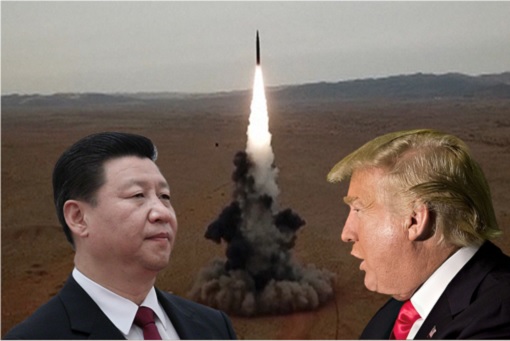
While DF-21D (Dong-Feng 21 variant) has a range of 1,500-km, the DF-26B is capable of reaching 4,000-km. The latest DF-21D is believed to be the world’s first anti-ship ballistic missile (ASBM) – especially upgraded by China to enhance its ability to prevent or target U.S. aircraft carriers from operating in the Taiwan Straits, in case of an invasion to forcefully take over the island.
The DF-26B, meanwhile, is another type of animal altogether. First revealed in 2015 during a parade commemorating the end of World War 2, it was officially confirmed to be in service with People’s Liberation Army Rocket Force (PLARF) in 2018, even though America believed the weapon was operational much earlier. But there’s a reason why the U.S. doesn’t like this missile.
The Dong-Feng 26 is also known as the “Guam Express” or “Guam Killer” – China’s first conventionally-armed ballistic missile capable of reaching Guam, the U.S. strategic military base that has about 7,000 U.S. military personnel stationed there, as well as other facilities in Darwin and Diego Garcia. And like the shorter range DF-21D, the DF-26B is also an “aircraft carrier killer”.
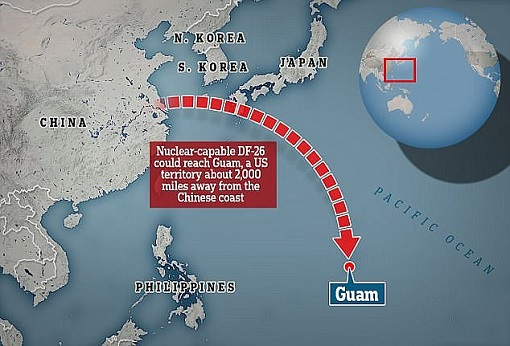
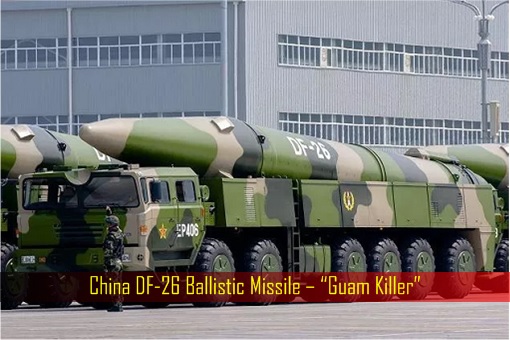
More importantly, both DF-21D and DF-26B can be armed with nuclear warheads, making them a lethal weapon against the enemies. The latest muscle-flexing exercise by China mirrors that of North Korea in 2017 when the notorious Kim Jong-Un successfully tested ballistic missile Hwasong-12 that would hit Guam in just 14 minutes.
In fact, the DF-26 ballistic missile is so dangerous that it’s the same type of weapon banned under the Intermediate-Range Nuclear Forces Treaty signed on 8 December 1987 by US President Ronald Reagan and Soviet General Secretary Mikhail Gorbachev. The treaty banned all land-based ballistic missiles, cruise missiles, and missile launchers with ranges of 500-1,000 km and 1,000–5,500 km.
The fact that China deliberately fired DF-21D and DF-26B missiles suggest that when push comes to shove, Beijing could simultaneously hit the U.S. aircraft carriers and Guam military bases at the same time to cripple the American military forces in the region. Apparently, Beijing fired the missiles on Wednesday in retaliation to a U.S. U-2 spy plane entering a no-fly zone without permission.
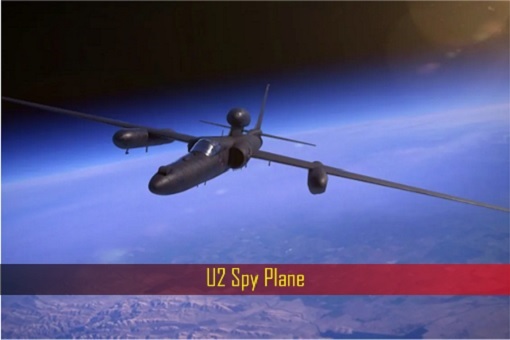
Zhao Lijian, China’s foreign ministry spokesman, accused the spy plane overflight as “provocative actions” during live-fire military exercises in northern China, and told the U.S. to stop. However, while the Pentagon confirmed the U-2 flight, it said the spy aircraft’s activity in the Pacific region was “within the accepted international rules and regulations governing aircraft flights.
But the real reason China brought out the big gun coincides with President Donald Trump’s increasingly tougher stance on Beijing to gain popularity as the November election nears. It also came at a time when the U.S. unveiled a set of visa and export restrictions targeting Chinese state-owned companies and their executives involved actively in the disputed South China Sea.
Effective on Wednesday, the U.S. added 24 Chinese companies to the sanction list, including five subsidiaries of CCCC (China Communications Construction Co.), a leading contractor for Chinese President Xi Jinping’s Belt and Road initiative (BRI) to develop infrastructure and trade links across the world. The U.S. calls CCCC “the Huawei of infrastructure,”
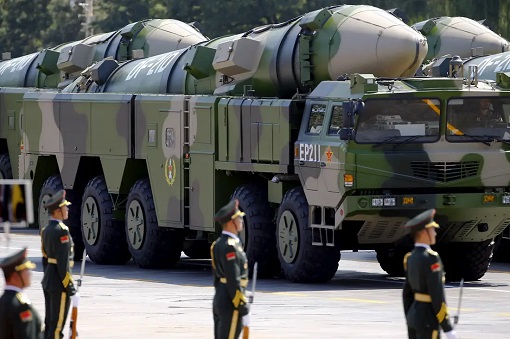
In June, U.S. Secretary of State Mike Pompeo announced that Washington was imposing visa restrictions on Chinese Communist Party officials believed to be responsible for undermining freedoms and autonomy in Hong Kong. Eventually, the U.S. Treasury Department froze U.S. assets of Chief Executive Carrie Lam and 10 other senior officials.
Earlier this month, in what appears to be a deliberate attempt to provoke Beijing, U.S. Health and Human Services Secretary Alex Azar met with Taiwanese President Tsai Ing-wen in Taipei – the highest-ranking US official to visit the island since 1979 and the first U.S. cabinet official to do so since 2014. To add fuel to the fire, Mr. Alex had even accused China of “hobbling” the world’s Coronavirus.
Interestingly, the launches of the Chinese ballistic missiles also occurred at a time as the U.S. neared the end of its annual RIMPAC military drills in Hawaii, the world’s largest maritime exercise with 10 navies from regional allies and partners, including Japan. At the same time, the Chinese People’s Liberation Army was conducting drills almost simultaneously in four sea regions.
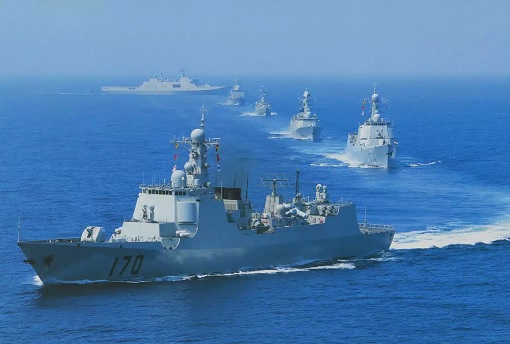
Song Zhongping, a Hong Kong-based military commentator, said the missile launches were clearly meant to send a signal to the United States. He said – “The US continues to test China’s bottom line in Taiwan and South China Sea issues, and this pushed China to showcase its military strength to let Washington know that even US aircraft carriers cannot flex their full muscle near China’s coast.”
Other Articles That May Interest You …
- Trump’s Ban On WeChat Will Backfire On Apple – Chinese Users To Throw Away iPhones Without WeChat
- After China, Now Russia Declares It’s “Unstoppable” Avangard Hypersonic Weapon Is Ready For War
- Xi Jinping Says “No Force Can Stop The Chinese”, Shows Nuclear Missiles Which Can Hit The U.S. In 30-Minutes
- From Trade War To Tech War – After 5G Technology, The US Aims To Cripple China’s Artificial Intelligence

|
|
August 27th, 2020 by financetwitter
|


|

|

|

|

|

|




























Comments
Add your comment now.
Leave a Reply